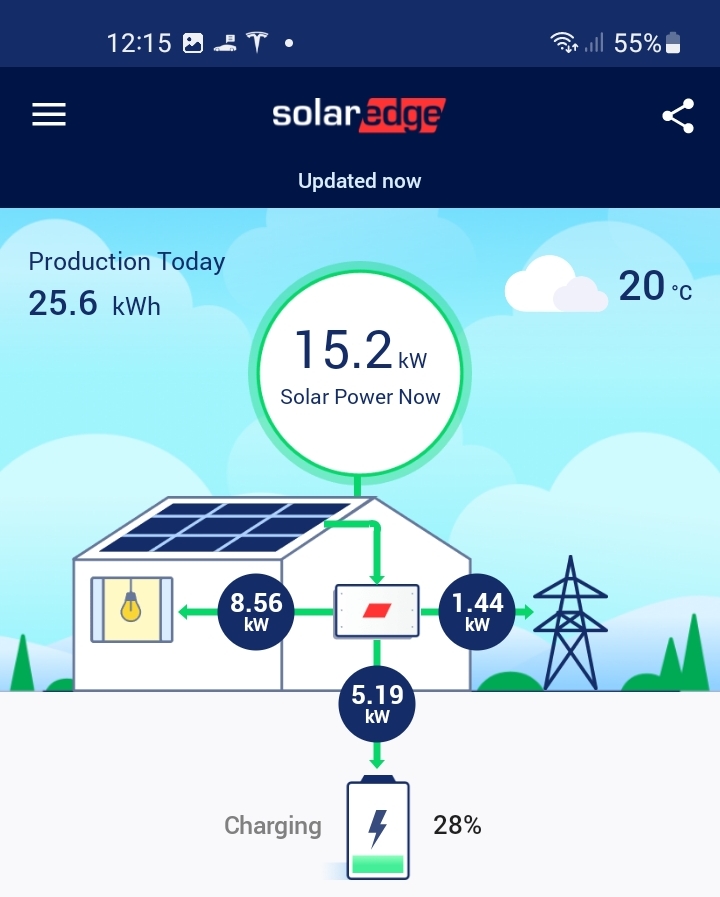
Fig 1 – Screenshot of monitoring app at 12.15 pm on 31 Oct 2022.
13.25 kWp panels and 10 kW inverter.
There are two reasons to maximise a domestic PV system’s export to the grid. The first is to maximise the income generated for the homeowner but more important for environmentalists is that the higher the export, the greener that the grid becomes. Even more important is to increase power exported to the grid when it is most needed. There is no shortage of power exported in the middle of the day when it is not in high demand. One way of shifting power consumption to the middle of the day, that is not normally undertaken, is to de-prioritise the charging of the house storage battery early in the day.
When sunlight is strong enough in the morning for the PV panels to start generating power, in a house with a storage battery, this power will be directed towards the demands of the house and then into charging the battery. There are two reasons not to charge the battery early in the morning.
If the charging of the house battery can be delayed until the middle of the day, then all power produced, up to the grid export limit, will be exported to the grid. The house will run off the battery unless the battery is depleted in which case power from the pv system will power the house. This obviously makes the grid greener than it would otherwise be when demand for domestic power is quite high. Charging the house battery in the middle of the day not only uses power when production is highest and demand is lowest, but if the house battery is DC coupled as opposed to AC coupled, then the amount of power that the house’s PV system can generate will increase.
In the situation where the peak output of the solar panels is higher than the maximum output of the inverter, the amount of power that can be used from the system is usually limited by the inverter’s maximum output. For example a property with a PV system with a 13.25 kWp rated output can usually only use 10 kW at any given time, if the inverter’s maximum output is 10 kW. However, it is possible to produce more power than the inverter's maximum if there is a DC coupled battery in the system. As DC coupled batteries charge directly from the DC output of the solar panels, the amount of power flowing to the battery does not pass through the inverter and so is not included in the inverter's AC output limit.
All that is necessary is to delay the charging of the battery until the middle of the day. In addition on a sunny summer's day the panels can actually produce more than their maximum rated output. As is demonstrated in fig 1, up to 5 kW of the panels’ output can go directly from the panels to the battery with the balance being produced going through the inverter to the house including an EV (8.56 kW) and exported to the grid (1.44 kW). As is shown, the amount of power being produced and available for use is 15.2 kW, which is well in excess of the inverter’s 10 kW limit. It can even be in excess of the panels’ rated output.

Fig 1 – Screenshot of monitoring app at 12.15 pm on 31 Oct 2022.
13.25 kWp panels and 10 kW inverter.
When the house battery is drawing its full charging current of 5 kW (as in fig 1) the limiting factor for the power being produced will be the panels’ ability to produce power given the existing conditions. If this is greater than 15 kW, then the inverter will again become the limiting component as the battery can only draw up to 5 kW and the inverter can only allow 10 kW to pass through it. Once the house battery has been fully charged, the amount of power produced will never exceed 10 kW no matter how sunny the day as the 10 kW limit of the inverter then becomes the limiting factor. It was interesting to discover that the actual peak power of my panels is higher than their rated 13.25 kW and is at least 15.01 kW.
Starting on the 1st of October 2021, I had my PV system reconfigured so that priority for charging the battery was delayed until noon. For October 2021, November 2021, December 2021, January 2022 and February 2022 the power produced was 12.13% higher than for the previous October, November, December, January and February. This not only resulted in a greener grid but also in a larger solar rebate. A secondary advantage is that, as the house runs off the battery until noon, it is not necessary to delay running appliances such as a washing machine and dishwasher until the middle of the day. This is because running appliances from the battery effectively time shifts their power usage until the battery starts charging, either after noon, or by using power in excess of the export limit if this becomes available before noon. Either way exporting to the grid is still maximised early in the morning.

Fig 2 – All comparable months after purchase of electric car on 28 March 2020.
Prior to the reconfiguration almost the same or less power was produced in 2021 as in 2020.
The risk of delaying the battery charging in winter is that a greater discharged battery, because of higher heating and cooking demands, the shorter days and the lower angle of the sun, may not have enough time to fully charge on overcast days. For this reason my battery is only set to start charging at noon from October 1 to February 28. However, as my battery is sometimes fully charged by noon from power in excess of the export limit, I may add September and March to my summer months’ profile.
To delay charging my battery until noon it was necessary to ask my installer to reconfigure my SolarEdge inverter to delay charging my LG Chem DC coupled battery by setting the Charge/Discharge profile to “Discharge to Minimise Import” from 5.00 am until noon from October 1 until February 28. After noon during the summer months and all day for the months of March through to September, the Charge/Discharge profile is set to “Maximise Self-consumption”. These times and dates may not be optimal as it is still a work in progress.
| Charge/Discharge Profile 2024 | |
| March 2 - April 1 6am - 11.00am (other times MSC) | Discharge to Minimise Import |
| April 2 - August 31 | Maximise Self-Consumption |
| September 6am - 11.00am (other times MSC) | Discharge to Minimise Import |
| October 1 - March 1 5am - noon (other times MSC) | Discharge to Minimise Import |
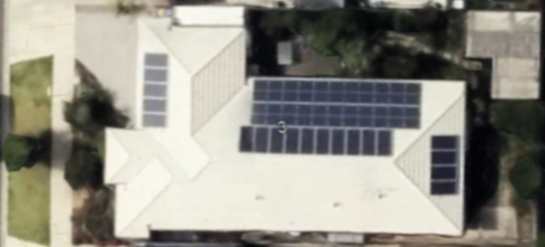
Panel Layout 30 August 2023
North is top of photo.
John Rogers
Tarneit, Victoria, Australia.
13.25 kWp panels,
19 x Jinko 350 watt, (10 north facing, 4 east facing, 5 west facing). {6.65 kW}
22 x Seraphim 300 watt (north facing).{6.60 kW}
9.8 kW LG Chem Battery
10 kW SolarEdge SE10000H Inverter
On 31 August 2023 an additional five JA Solar Deep Blue Light 415 watt panels (3 facing north and 2 facing east) were installed thereby increasing the system size to 15.325 kWp. The size of the inverter would allow a further eleven panels to be fitted.
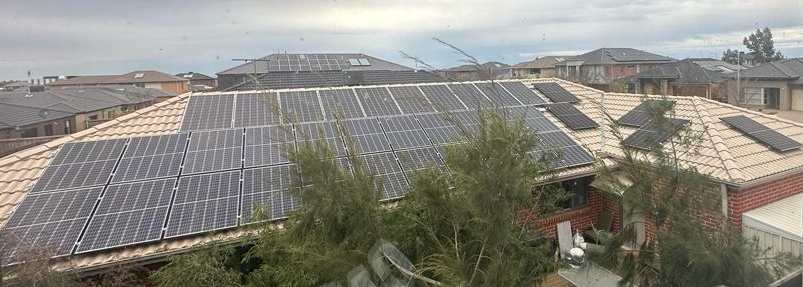
Five panels on far right fitted 31 August 2023.
Photo courtesy of my neighbour, Vishal.
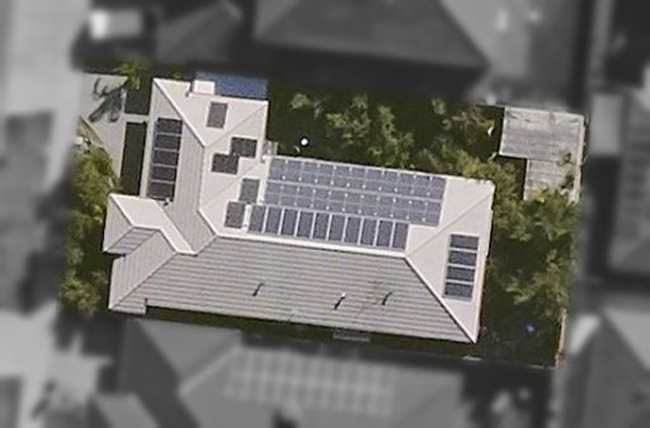
Panel Layout after August 2023
North is top of photo.
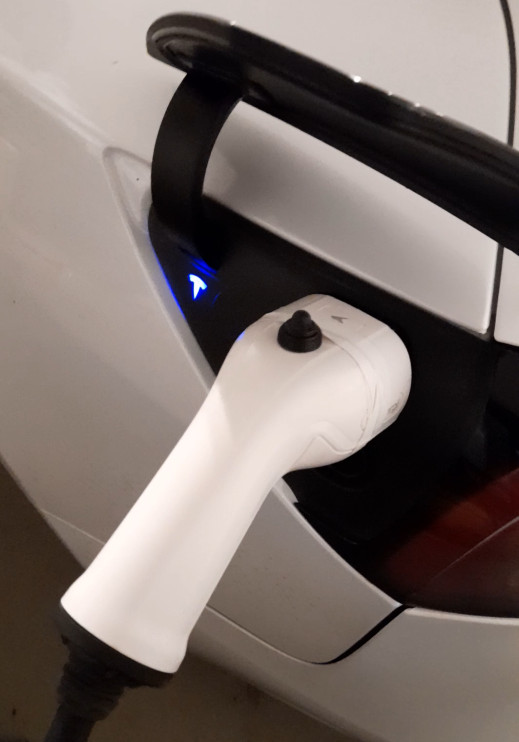
Adding a Button to a Non-Tesla Mennekes (Type 2) plug.
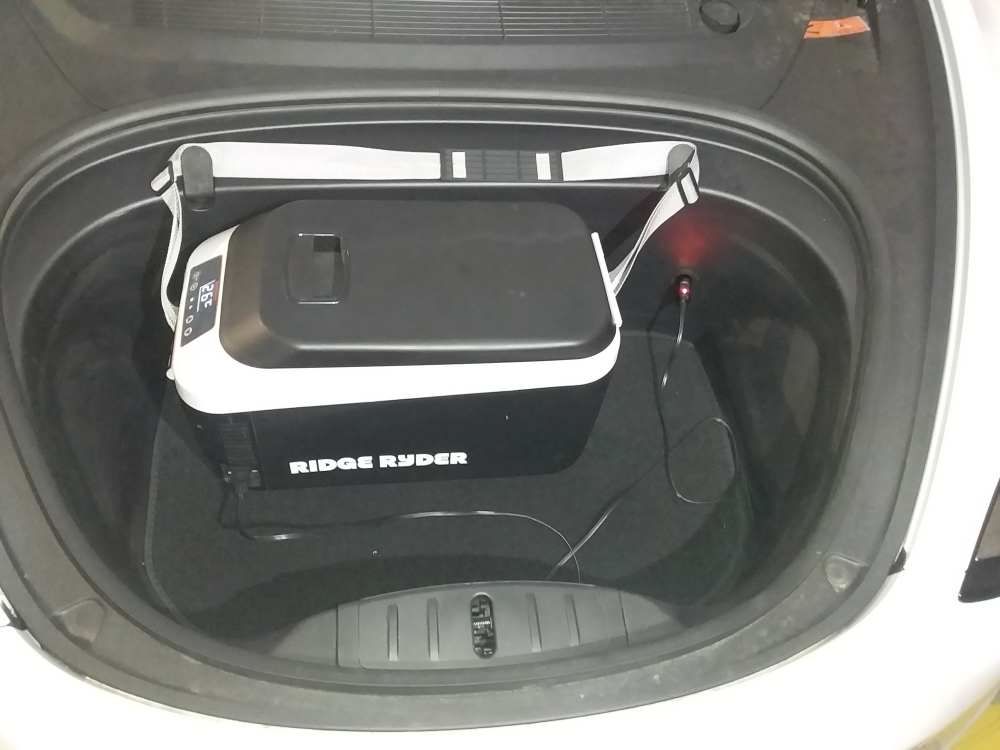
Ridge Ryder 14 litre cooler/warmer in the Tesla M3 Frunk